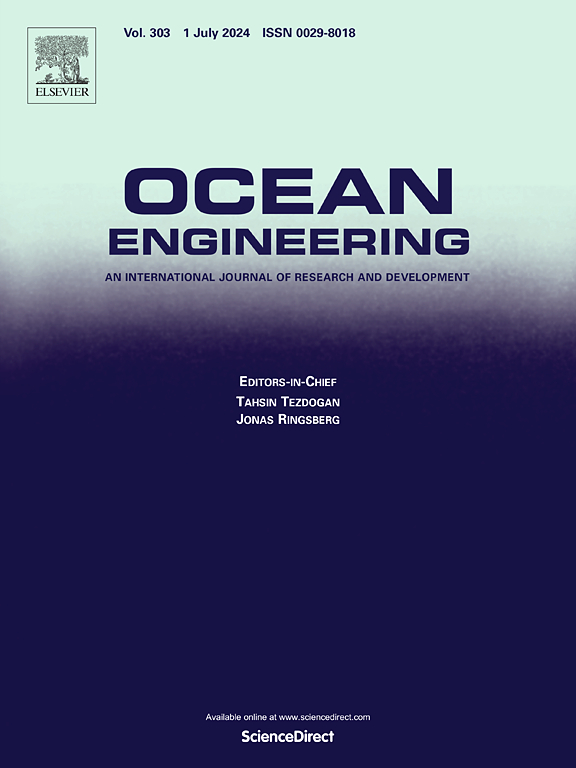Operational modal analysis applied to floating offshore wind turbine dynamics identification in wave basins in the presence of free-surface modes
IF 4.6
2区 工程技术
Q1 ENGINEERING, CIVIL
引用次数: 0
Abstract
This paper presents the modal characteristics of a 10 MW floating offshore wind turbine (FOWT) model, scaled to full size. We utilise both traditional and advanced algorithms, including logarithmic decrement, stochastic subspace identification covariance and data-driven methods, to analyse the system's operational behaviour under free decay and irregular wave conditions. This study explores the full damping matrix and the influence of coupled degrees of freedom. Under irregular wave conditions, a 30% deviation in the surge resonance frequency is identified, which is linked to the wave period's near-heave resonance and a fluid free-surface mode of the fluid inside the wave tank. The use of stability diagrams facilitates the identification of these modes from the FOWT's response. Furthermore, this paper examines the evolution of damping and operational deflection shapes across different sea states. The models synthesised from modal estimations of wave tests are validated using autocorrelation functions, which confirm that the employed methods effectively captured the FOWT's rigid-body dynamics, even in extreme conditions where the FOWT and fluid act as a coupled system. The study emphasises that free-surface modes have the potential to introduce additional energy, which could be a significant contributor to the underestimation of low-frequency responses in numerical hydrodynamic models.
求助全文
约1分钟内获得全文
求助全文
来源期刊

Ocean Engineering
工程技术-工程:大洋
CiteScore
7.30
自引率
34.00%
发文量
2379
审稿时长
8.1 months
期刊介绍:
Ocean Engineering provides a medium for the publication of original research and development work in the field of ocean engineering. Ocean Engineering seeks papers in the following topics.
 求助内容:
求助内容: 应助结果提醒方式:
应助结果提醒方式:


